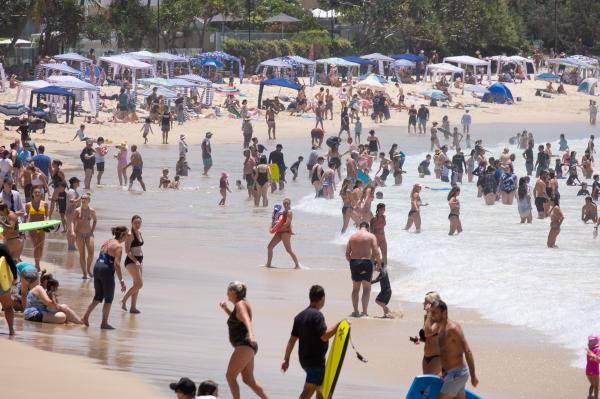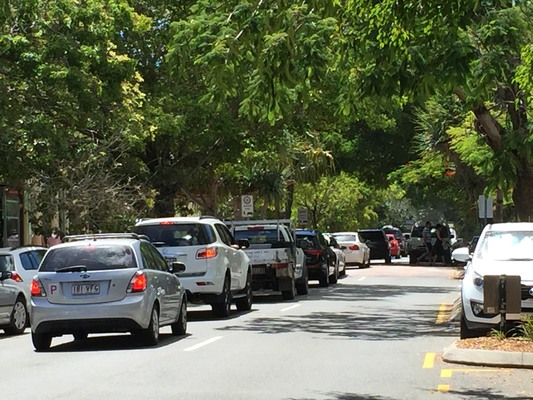In the post-Covid world, more and more Australians will flee the cities for the coast, according to population analysts.
But while the Sunshine Coast population is predicted to crash through half a million by 2041, Noosa Shire’s controlled growth over the same period will be a modest 8,000.
These projections, based on figures released by the Sunshine Coast Council late last year and by the Queensland government’s 2018 population projections for Noosa, are not expected to be changed significantly by the evolving coronavirus situation, although much of the net growth in the coming years is likely to be driven by interstate rather than international migration.
From Noosa’s perspective, average growth of around 400 a year is unlikely to endanger the zoning-controlled “population cap” within the life of the new Noosa Plan, but what is concerning is the expected growth of more than 8,000 a year in the neighbouring Sunshine Coast local government area as part of an ongoing population explosion in South East Queensland, which is certain to push the “daytripper tsunami” into unprecedented levels, creating new pressures on traffic flow and infrastructure.
Just to put this in perspective, population growth of our neighbouring shire is expected to be 20 times our own growth every year for the next 20 years.
Meanwhile, although no post Covid-19 population modelling has been done here, Noosa Shire Council’s Principal Strategic Planner and “population guru” Rowena Skinner says:
“Certainly our observation at the moment is that any immediate loss of international students or immigrants has been more than replaced by expats who have returned home and interstate migration from people departing Melbourne and Sydney. Even Brisbane residents who have gained a taste for working from home have departed the capital for coastal locations like ours.”
Rowena points to University of Queensland research which suggests Australia as a whole will experience a significant reduction in international migration with up to a four percent reduction in the forecasted 2040 population, adding: “However, historically international migrants predominantly settle in inner city, higher density environments, so it is expected the capital cities will feel their absence the most. Interstate migrants are particularly attracted to coastal destinations like the Sunshine Coast and Gold Coast. In the 12 months ending June 2020, Queensland had the largest net gain of people, compared to all other states and territories in Australia. Brisbane had a net inflow of 13,500 people while the areas outside the capital city had a net inflow of 11,800 people.
The Australian Bureau of Statistics, in its December 2020 Population Statement, predicts the “rest-of-state” (the part of Queensland that isn’t Brisbane) will have the highest level of net internal migration in the country over the next decade, driven by the high growth in coastal areas, such as the Gold Coast and the Sunshine Coast.
The increasing flight to the coast is what is driving housing prices up and rental availability down, according to data released by CoreLogic this month, and its impact is being felt along the east coast from Bells Beach to Noosa. According to CoreLogic, the Victorian Surf Coast (centred on Torquay) had zero rental availability last month while Noosa had just 0.2 percent, down from 1.8 percent in December 2019.
Their survey of housing prices across eight popular coastal regions is even more revealing, with Noosa leading the way with a 15.2 percent increase over the 12 months to December 2020. Byron Bay was next with a 14.3 percent increase, but Byron was the winner in median house prices with $1,218,616, well ahead of Noosa’s $866,178. The only other coastal zone to break the million mark was Victoria’s Surf Coast with $1,038,253.
Interestingly, apart from Noosa, none of the eight coastal regions surveyed has any kind of population capping strategy in place within its town planning. Victoria’s Mornington Peninsula does, but it wasn’t in the survey, and with a current population of 165,000, the horse may already have bolted.
In Noosa we can thank years of responsible local government for our control of growth, but as the new sea change gathers momentum all around us, don’t expect to find a car park at the beach. But, as a reader noted last week on the surf forecast website Swellnet,“The problem isn’t that people are moving into surf towns, it’s that housing is used as an investment tool to create wealth.”








